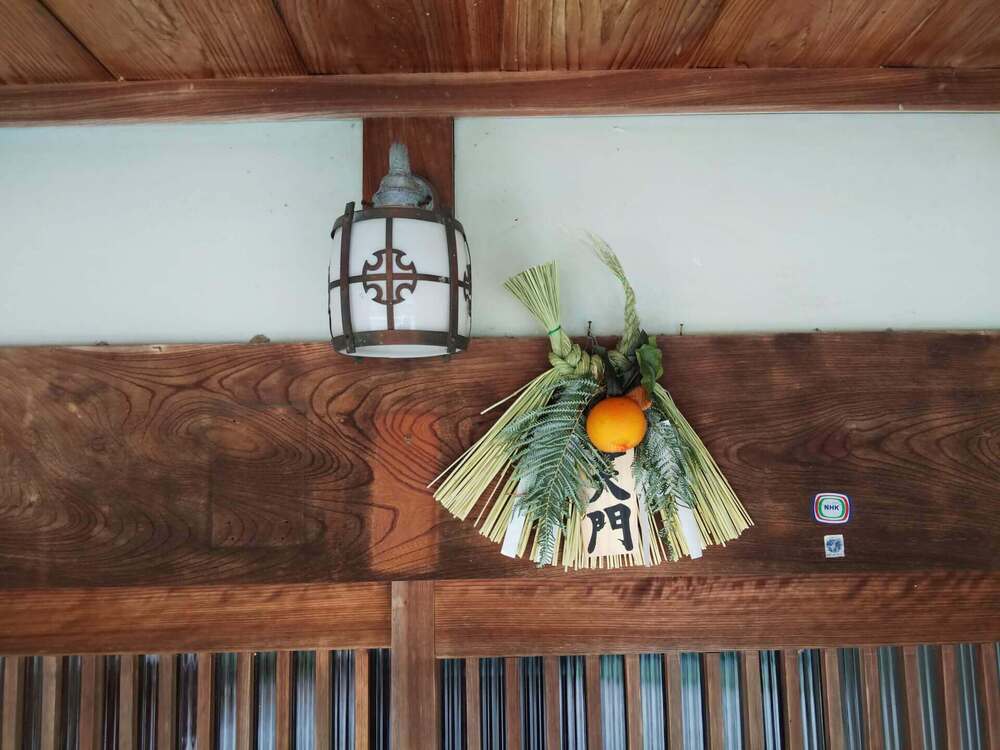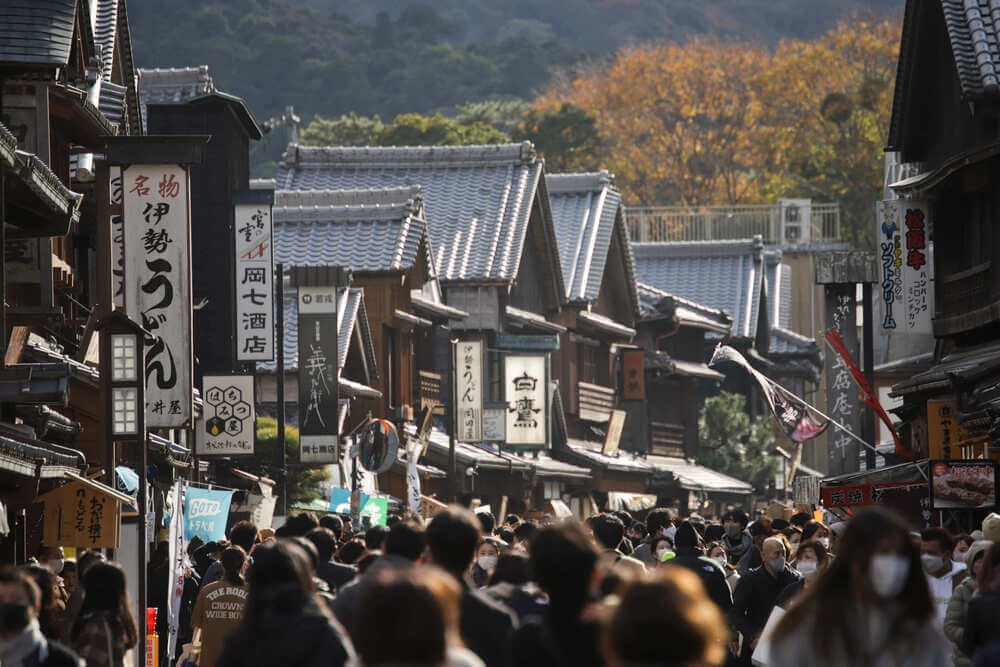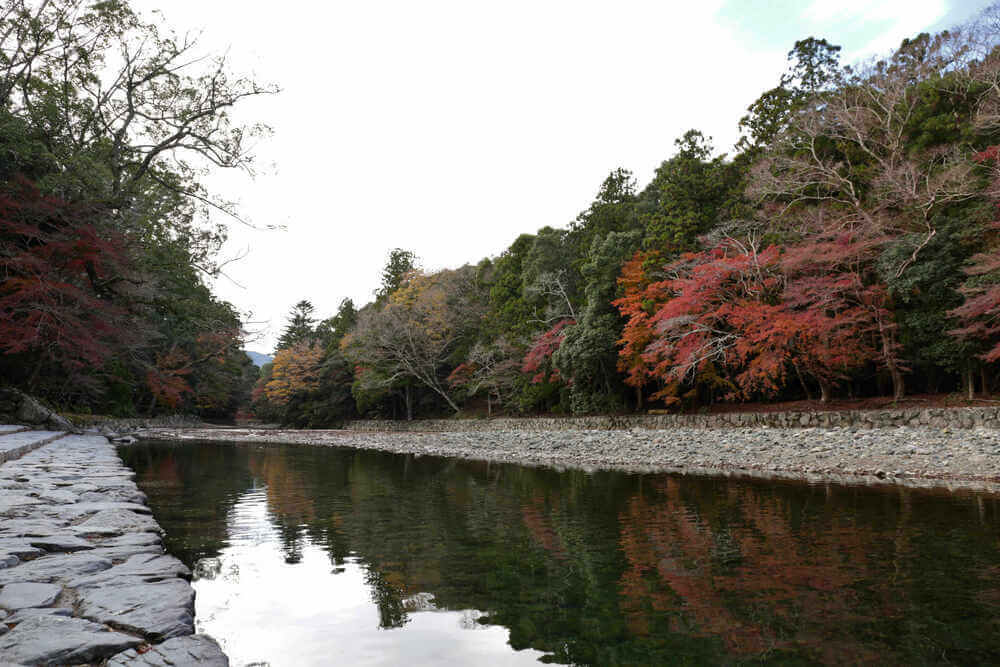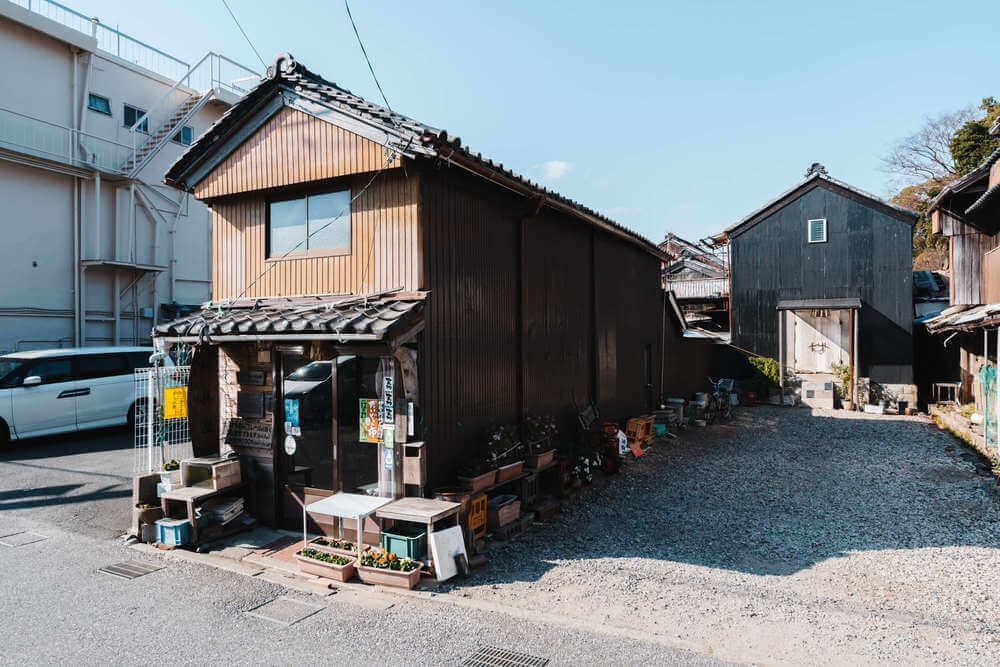
A house with a triangular roof that looks like an open book.Many private houses in Ise have gables and wives, and the saw-shaped roof gives a sense of rhythm.
The reason is that the main hall of the Jingu is flat, so it is "awe-inspiring" like the Jingu, and because it faces the road, there were many narrow frontages, deep and long and narrow sites, and gabled buildings became popular. It is said that it was made to do.
The roof is covered with roof tiles unique to Ise called "Ise roof tiles", and the second floor has an outer enclosure called "overhanging south roof tiles".In addition, at the tip of the eaves on the first floor, there is a fascia of rafters called "eave escape board", which is a major factor in giving continuity to the town.

As you walk through the town of Ise, you will see Shimenawa decorations at the gates of the houses.It is a thick shimenawa with a hornbeam and urajiro on the left and right, with a gate sign (wooden tag) inscribed in the center, such as "Somin Shorai Descendant Family Gate" or "Laughing Gate" "Senkaku Manrai".It is common to remove the Shimenawa decorations for the New Year after the pine trees have passed, but in Ise-Shima, it is customary to spend a year.
It said, "A long time ago, Susano Onomikoto, who visited this place, was rented an overnight inn by the poor but benevolent Somin Shorai. Because there is a legend that "I left behind."He raised the gate mark as proof that he was a descendant of the Sumin, and he began to pray for a disease-free life.In other words, it is a gate mark of "apotropaic magic" with a prayer for family safety.
By the way, "Shomon" is a shortened version of "Somin Shorai's descendant family gate", and it is said that it became "Shomon" because it hated to lead to Taira no Masakado.

A custom that has been established since the Meiji era is "Sakuhisho", which is a beautiful style unique to Jinryō, where you visit the shrine early in the morning on the first day of every month, thank God, and start the month with a pure feeling.
The custom continues even now, and thanks to Naikumon-mae, Yokocho opens the shop early in the morning to serve special porridge and entertain worshipers.

There is an old tradition on the day of the Ox and August XNUMXst of the lunar calendar.
It is said that if you draw water from the Isuzu River and offer it to the Takimatsuri no Kami in the inner shrine area, then take it home and offer it to the Kamidana, you will be able to spend the whole year in a breathing disaster.
Ise, the hometown of the heart, has inherited the traditional crafts that have been nurtured in its climate and history since ancient times.It is popular as a product that takes advantage of the simple taste of each material.

The "Ise Machikado Museum" is centered on the Ise town revitalization group "The Ise Ko", and "If anyone has a little place, it's about one of the museums based on what they like, what they can be proud of, and what they enjoy. It started with the basic theme of "I can make".
Traditions and cultures are still alive in the town of Ise, which has been entertaining travelers visiting Ise for a long time. Now, 30 museums are open to the public as Machikado Museum.
The "Machikado Museum" where genuine Ise children introduce the living culture of Ise that can only be seen there.You can meet Ise with a real face that you can not taste on a hurry trip.